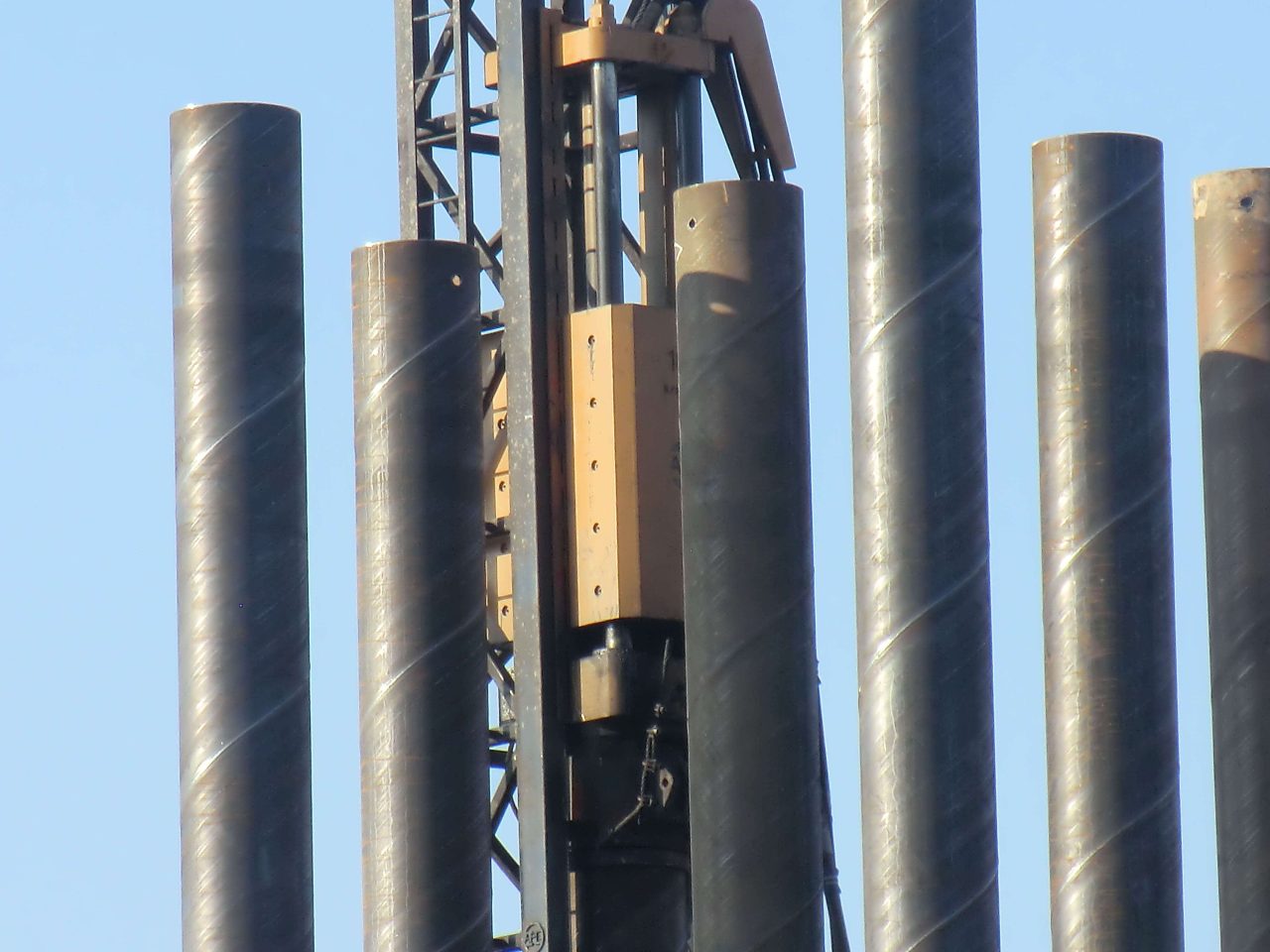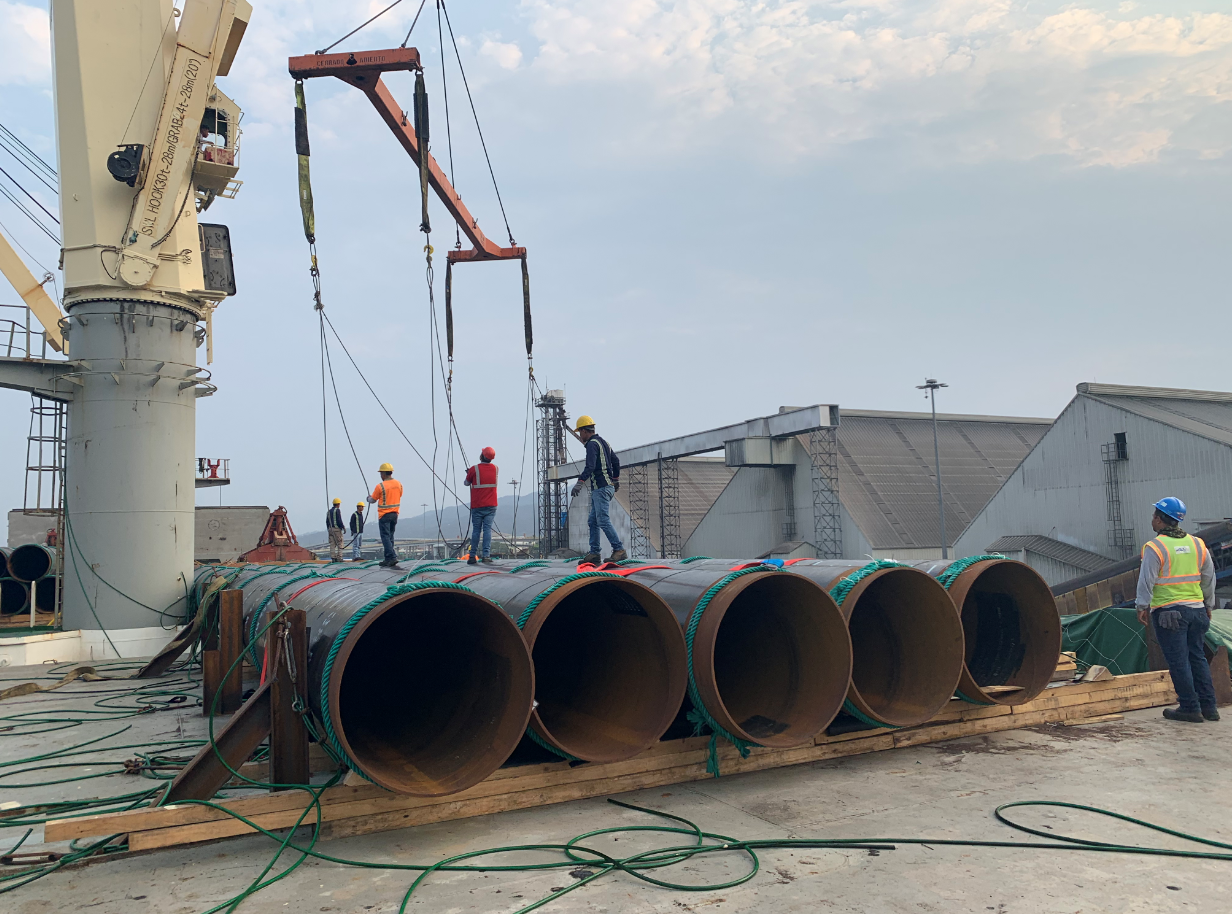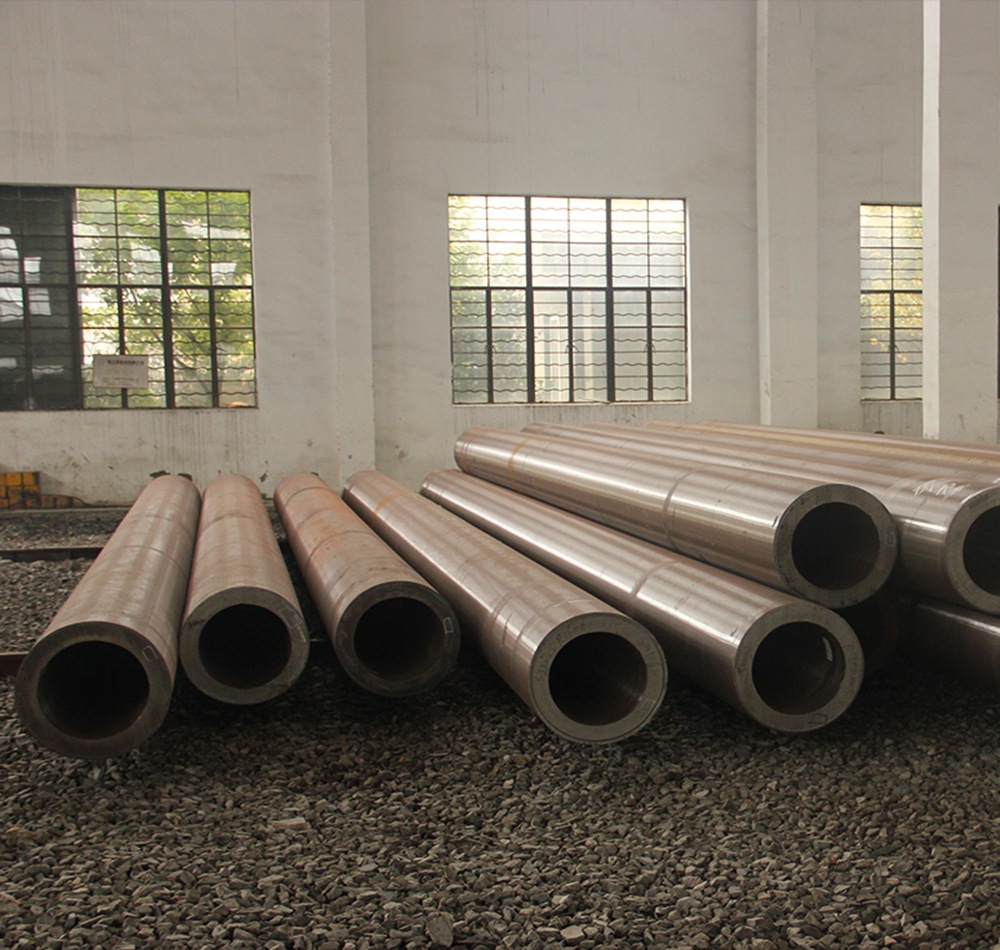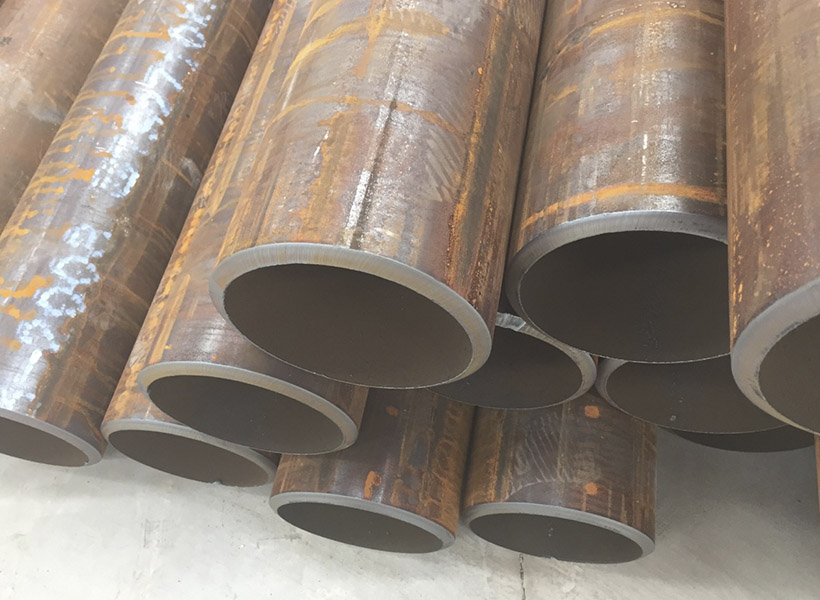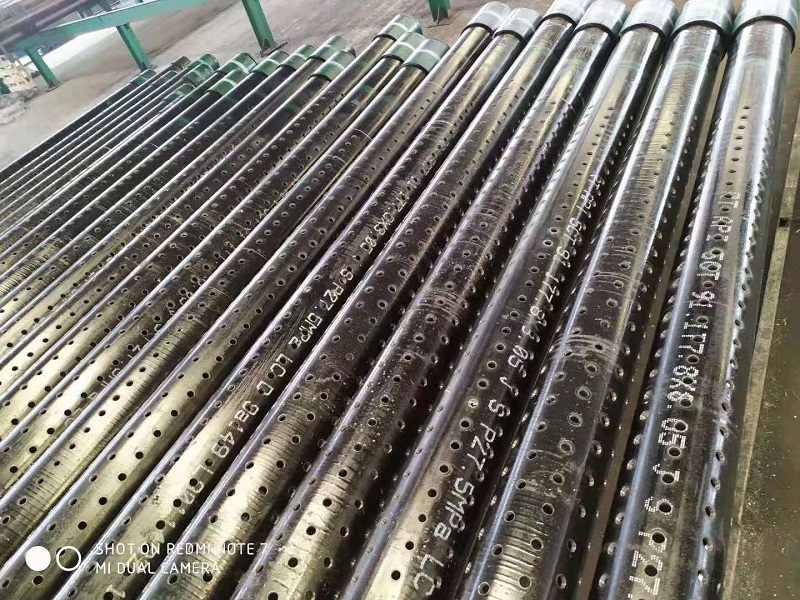In the realm of well productivity, pre-packed screens have emerged as a highly effective solution for achieving optimal performance. With advancements in technology, pre-packed screens have evolved to incorporate innovative features such as flange connections, multi-layers, and gravel well technologies. These enhancements further enhance sand control capabilities, improve well integrity, and maximize production efficiency. Let’s explore these technologies in detail:
| Material | 30mm to 11800mm |
| Length | 0-12 m(5.9 meters or 11.8 meters suitable for container loading) |
| Outer diameter | 114mm to 600mm |
| Slot size | 0.05,0.1,0.15,0.2,0.25,0.3,0.5 to 20mm also achieved upon request |
| End connection | Plain beveled ends, flanged or threaded couplings |
| Support rod | (1)Width(mm):2,2.3,3,4,5 Height(mm):3,4.8,6,8 (2)Round(mm): Ø2.5–Ø5mm (3)Custom specifications |
| Wedge wire | (1)Width(mm):0.75,1,1.5, 2,2.3,3,3.5,4 Height(mm):1.5,2,2.5,3,4,5,6.5,8 (2)Custom specifications |
| Product Application | The pre-filled filter is a combination of two layers of filter tubes filled with filter material. The gap of the filter can be customized according to the customer’s requirements, it prevents the entry of solid matter, but the fluid can flow through. The pre-filled filter is mainly used in oil, gas and water wells, and the gravel and the like are filled in the annular space of the inner and outer screens. It does not require downhole operations and achieves better sand control. It is an advanced downhole sand control process. The catalyst or sterilizing agent is filled in the middle of the interlayer for remarkable effects in chemical production or industrial sterilization. The central base pipe of the pre-filled filter is selected by three types of tubes: API standard drilling casing, bridge filter water pipe and continuous hole wire wound pipe. The middle filter medium is quartz sand, fine gauze mesh, metal fiber, Ceramic particles, etc. The outer screen sleeve has a continuous hole of a wire wound tube and a bridge type filter water pipe to choose from. |
| Product Description | A pre-packed well screen consists of one screen telescoped inside another,with an annuls filled with filter pack at the factory before shipment.Our screen cylinders are used for a variety of filtration,media retention and dewatering applications. Screen slots are sized to admit fluid flow while excluding solids.With such packing material as gravels filled into the space between their outer and inner,double prepacked screens,mainly used in oil wells,gas wells and water wells,will make downhole operation unnecessary and better sand prevention which is and advanced sand control technology. Catalysts or microbicides packed in the inner layers of screens contribute to chemical production and industrial sterilization. For the pre-packed screen,base pipe can apply perforated casing with API standard,bridge slot screen,or continuous slot well screen,while in the middle layer,the filter media could be quartz,wire mesh,metal fibre,ceramic beads,etc.The screen jacket could use continuous slot screen,bridge slot screen. Benefits of the Pre-packed screen are: 1.Smaller borehole 2.No gravel placement 2.Increased strength 3.Thinner filter pack |
| Product Advantages | 01SMALL OPENING DIAMETER Smaller opening diameter provides finer filtration 02NO ADDITIONAL FILTER MATERIAL REQUIRED The finished product directly completes the process of adding the filter material, which greatly facilitates the construction. 03HIGH PIPELINE STRENGTH Double pipe support, with · more resistance to pressure. 04TUBE TYPE THIN The pipe wall is light and convenient for engineering transportation. The pipe wall is thin but the pressure resistance is strong. It is an ideal filter pipe. |
1. Flange Connection Technology:
Flange connections are a significant advancement in pre-packed screens, offering a secure and reliable method of joining screen sections together. This technology ensures a tight seal, preventing any leakage or sand bypass. The flange connection system provides ease of installation and maintenance, allowing for quick and efficient screen assembly. This feature is particularly beneficial in wells with complex geometries or challenging downhole conditions. Flange connections enhance the overall integrity of the pre-packed screen system, reducing the risk of sand production and ensuring long-term well productivity.
2. Multi-Layer Configuration:
Multi-layer pre-packed screens have revolutionized sand control by offering enhanced filtration capabilities. These screens consist of multiple layers of varying particle sizes, strategically packed around the base pipe. The use of different-sized particles in each layer allows for efficient sand retention while maintaining optimal flow rates. The larger particles in the outer layers act as a coarse filter, preventing larger sand grains from entering the wellbore. The inner layers, composed of finer particles, provide a finer filtration barrier, capturing smaller sand particles. The multi-layer configuration maximizes sand control efficiency, minimizes the risk of plugging, and ensures long-term well productivity.
3. Gravel Well Technology:
Gravel well technology is a complementary technique used in conjunction with pre-packed screens to further enhance sand control. In this method, a layer of gravel is placed around the pre-packed screen, providing additional support and stabilization. The gravel acts as a secondary filter, preventing the movement of fines and enhancing the overall sand control efficiency. This technology is particularly useful in wells with high sand production rates or unconsolidated formations. By combining pre-packed screens with gravel well technology, operators can achieve superior sand control, prolong well life, and optimize production rates.
The integration of flange connection technology, multi-layer configurations, and gravel well technologies into pre-packed screens offers several benefits:
- Improved Sand Control: These advancements provide superior sand control capabilities, minimizing the risk of sand production and associated equipment damage. By effectively filtering out sand particles, pre-packed screens with these technologies ensure uninterrupted well productivity.
- Enhanced Well Integrity: The tight seal provided by flange connections and the multi-layer configuration of pre-packed screens contribute to improved well integrity. This reduces the chances of sand migration, screen erosion, and formation damage, ensuring long-term well performance.
- Optimized Production Efficiency: The combination of these technologies allows for optimal flow rates while maintaining sand control. By preventing sand influx and minimizing plugging, pre-packed screens with these features enable consistent production rates, maximizing overall well efficiency.
- Extended Equipment Lifespan: The enhanced sand control capabilities and reduced risk of sand production prolong the lifespan of downhole equipment. This leads to decreased maintenance costs, minimized downtime, and improved return on investment.
In conclusion, the integration of flange connection technology, multi-layer configurations, and gravel well technologies into pre-packed screens has revolutionized sand control and well productivity. These advancements offer improved sand control, enhanced well integrity, optimized production efficiency, and extended equipment lifespan. By utilizing pre-packed screens with these innovative features, operators can achieve optimal well productivity and ensure long-term success in the oil, gas, and water industries.
The use of pipe piles in foundation construction has been a popular choice for many years. Pipe piles are used to transfer the load of a structure to a deeper, more stable layer of soil or rock.
Benefits of Pipe Trusses The use of pipe trusses in construction offers several notable advantages: Strength and Load-bearing Capacity: Pipe trusses are renowned for their high strength-to-weight ratio. The interconnected pipes distribute loads evenly, resulting in a sturdy and reliable structure. This allows for the construction of large spans without the need for excessive support columns or beams.
The standard for fluid-conveying seamless pipes depends on the country or region you are in, as well as the specific application. However, some widely used international standards for fluid-conveying seamless pipes are: ASTM A106: This is a standard specification for seamless carbon steel pipes for high-temperature service in the United States. It is commonly used in power plants, refineries, and other industrial applications where high temperatures and pressures are present. It covers pipes in grades A, B, and C, with varying mechanical properties depending on the grade. API 5L: This is a standard specification for line pipes used in the oil and gas industry. It covers seamless and welded steel pipes for pipeline transportation systems, including pipes for conveying gas, water, and oil. API 5L pipes are available in various grades, such as X42, X52, X60, and X65, depending on the material properties and application requirements. ASTM A53: This is a standard specification for seamless and welded black and hot-dipped galvanized steel pipes used in various industries, including fluid-conveying applications. It covers pipes in two grades, A and B, with different mechanical properties and intended uses. DIN 2448 / EN 10216: These are European standards for seamless steel pipes used in fluid-conveying applications, including water, gas, and other fluids. Read more
Fluid-conveying seamless pipes are designed to resist various types of corrosion depending on the material used and the specific application. Some of the most common types of corrosion that these pipes are designed to resist include: Uniform corrosion: This is the most common type of corrosion, where the entire surface of the pipe corrodes uniformly. To resist this type of corrosion, pipes are often made of corrosion-resistant materials, such as stainless steel or lined with protective coatings. Galvanic corrosion: This occurs when two dissimilar metals are in contact with each other in the presence of an electrolyte, leading to the corrosion of the more active metal. To prevent galvanic corrosion, pipes can be made of similar metals, or they can be isolated from each other using insulating materials or coatings. Pitting corrosion: Pitting is a localized form of corrosion that occurs when small areas on the pipe's surface become more susceptible to attack, leading to the formation of small pits. This type of corrosion can be prevented by using materials with high pitting resistance, such as stainless steel alloys with added molybdenum, or by applying protective coatings. Crevice corrosion: Crevice corrosion occurs in narrow spaces or gaps between two surfaces, such Read more
Wedge wire screens, also known as profile wire screens, are commonly used in various industries for their superior screening capabilities. They are constructed from triangular-shaped wire,
2 7/8in J55 K55 Perforated Well Casing Pipe is one of mainly products of we abter steel, they can be used for water, oil, gas well drilling fields. The thicknesss can be supplied from 5.51-11.18mm based on client's well depth and required mechanical properties. Normally they are provided with thread connection, like NUE or EUE, which will be easier to installed at site. The length of 3-12m perforated casing pipes are available for client's different drilling rigs height. The hole diameter and open area on the surface are also customized. The popular hole diameters are 9mm, 12mm, 15mm, 16mm, 19mm, etc.

